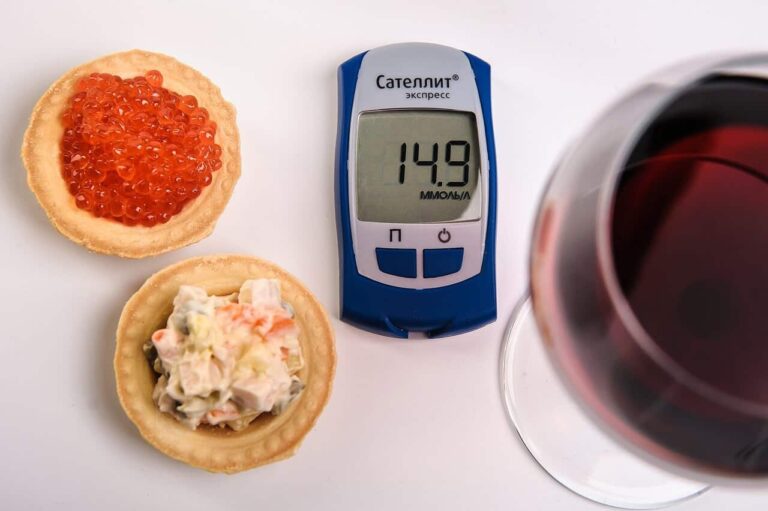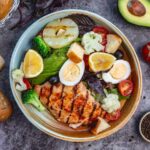When you’re diagnosed with diabetes, it feels like you’re handed a giant, invisible “DO NOT EAT” list. Suddenly, food—once a source of joy, culture, and connection—becomes a minefield of carbs, spikes, and anxiety. The world shrinks to a bleak landscape of “can’ts” and “shouldn’ts.”
But what if we flipped the script?
What if, instead of obsessing over the foods to avoid, we focused on the powerful, delicious, and satisfying foods we should be adding to our plates? What if we built a diet based on abundance, not restriction?
Forget bland, boring “diabetic food.” This isn’t a list of things you have to eat. This is a guide to five nutritional powerhouses that can help you manage your blood sugar, boost your health, and actually enjoy your meals. These are the building blocks of a better, more flavorful relationship with food.
Your Friendly Disclaimer: I’m a fellow traveler on this diabetes journey, not a dietitian or doctor. The information here is based on extensive research and personal experience. Please consult with your healthcare team or a registered dietitian to create a nutrition plan that’s perfect for you.
The Philosophy: Why These 5 Made the Cut
This list isn’t random. Each of these food groups was chosen for its proven superpowers in the world of blood sugar management. They all share a few key characteristics:
- Low Glycemic Impact: They don’t send your blood sugar on a wild rollercoaster ride.
- High in Fiber: Fiber slows down digestion, promoting steady blood sugar levels and keeping you full longer.
- Rich in Healthy Fats & Protein: These nutrients are crucial for satiety, heart health, and stable energy.
- Nutrient-Dense: They are packed with vitamins, minerals, and antioxidants that your body needs to thrive.
So, let’s get to the good stuff.
For more detailed nutritional information, the American Diabetes Association’s Food Hub is a fantastic resource.
The 5 Powerhouses to Add to Your Plate
1. Leafy Greens: The Unsung Heroes
(Spinach, Kale, Arugula, Swiss Chard, Romaine Lettuce)
If your plate were a superhero team, leafy greens would be the quiet, dependable hero that saves the day without needing any of the glory. They are incredibly low in digestible carbs and calories but jam-packed with nutrients like Vitamin C, magnesium, and iron.
- The Science: Because they’re so low in carbs, they have a minimal impact on your blood sugar. Their high fiber content also helps keep you feeling full, preventing mindless snacking.
- The T1D Reality Check: These are essentially “free” foods in terms of carb counting. You can pile them on your plate to add volume and nutrition to any meal without worrying about a significant glucose spike. They are the perfect canvas for building a satisfying meal.
- Easy Ways to Eat More:
- Toss a huge handful of spinach into your morning smoothie.
- Use large romaine or butter lettuce leaves as wraps for sandwiches.
- Sauté kale with garlic and olive oil as a quick side dish.
2. Fatty Fish: The Heart’s Best Friend
(Salmon, Mackerel, Sardines, Herring, Tuna)
Diabetes puts us at a higher risk for heart disease, which makes choosing heart-healthy foods a top priority. Fatty fish are the undisputed champions here, thanks to their incredible concentration of Omega-3 fatty acids (DHA and EPA).
- The Science: Omega-3s are famous for reducing inflammation, improving artery health, and protecting your heart. On top of that, fish is a fantastic source of high-quality protein, which helps with satiety and has no direct impact on blood sugar.
- The T1D Reality Check: Since fish is carb-free, you don’t typically need to bolus for it. However, a large, high-protein meal can sometimes cause a slow, delayed blood sugar rise a few hours later. Keep an eye on your CGM to see how your body responds.
- Easy Ways to Eat More:
- Bake a salmon fillet with lemon and dill for a 20-minute dinner.
- Mix canned tuna or salmon with Greek yogurt for a healthy, high-protein salad.
- Try smoked salmon on a whole-grain cracker with a bit of cream cheese.
3. Nuts & Seeds: The Crunchy Snack Saviors
(Almonds, Walnuts, Chia Seeds, Flaxseeds, Pumpkin Seeds)
When that 3 PM snack attack hits, reaching for a bag of chips is tempting. But a handful of nuts or seeds is a far smarter—and more satisfying—choice. They are a perfect trifecta of healthy fats, fiber, and protein.
- The Science: The combination of fat, fiber, and protein leads to very slow digestion and a minimal impact on blood sugar. In fact, studies show that nuts can help reduce fasting blood sugar and improve long-term glycemic control (A1C). Walnuts are rich in Omega-3s, while almonds are packed with magnesium.
- The T1D Reality Check: Portion control is everything! Nuts are calorie-dense, so a “serving” is about a small handful (around 1/4 cup), not the whole bag. Chia and flax seeds are fiber powerhouses; add a tablespoon to yogurt or smoothies to slow carb absorption.
- Easy Ways to Eat More:
- Keep small, pre-portioned bags of almonds in your car or bag for emergencies.
- Make a simple chia seed pudding for a grab-and-go breakfast.
- Sprinkle chopped walnuts or pumpkin seeds over a salad for extra crunch.
4. Avocado: The Millennial Icon for a Reason
It’s not just a trend; avocado is a nutritional superstar. Creamy, delicious, and incredibly versatile, it’s loaded with healthy monounsaturated fats and a shocking amount of fiber.
- The Science: A whole avocado can have as little as 2-3 grams of net carbs, but over 10 grams of fiber! The healthy fat and fiber combo is a dream team for blood sugar stability and keeps you feeling full for hours.
- The T1D Reality Check: The high-fat content of avocado can slow down the digestion of any carbs you eat with it. This is great for preventing a spike from, say, a slice of toast, but it might mean you need to adjust your insulin timing (e.g., using an extended bolus on a pump) to match the slower glucose rise.
- Easy Ways to Eat More:
- The classic: mashed on whole-grain toast with a sprinkle of everything bagel seasoning.
- Slice it into salads or grain bowls.
- Blend it into a smoothie for a creamy, dairy-free texture.
5. Legumes: The Complex Carb Champions
(Lentils, Chickpeas, Black Beans, Kidney Beans)
“Wait,” you might be thinking, “beans have carbs!” And you’re right, they do. But they are perhaps the best kind of carbs you can eat.
- The Science: Legumes are low on the glycemic index, meaning they release their sugar into the bloodstream slowly and steadily. This is thanks to their incredible combination of plant-based protein and soluble fiber. They provide sustained energy without the dramatic spike-and-crash.
- The T1D Reality Check: You absolutely need to count the carbs and bolus for legumes. But you’ll likely notice a much gentler, more predictable blood sugar rise compared to something like white rice or bread. They are a perfect example of how “carbs” are not the enemy; the type of carb is what matters.
- Easy Ways to Eat More:
- Make a hearty lentil soup.
- Roast chickpeas with spices for a crunchy, high-fiber snack.
- Whip up your own hummus to serve with veggie sticks.
Final Thoughts: Build a Plate You Love
Managing diabetes doesn’t mean you’re sentenced to a lifetime of steamed chicken and unseasoned broccoli. It’s about being a smart architect of your own plate.
By focusing on adding these five powerhouse food groups, you’ll naturally crowd out the less helpful stuff. You’ll build meals that are more satisfying, more nutritious, and far better for your blood sugar. This is your invitation to get creative, to explore new flavors, and to fall in love with food all over again.











